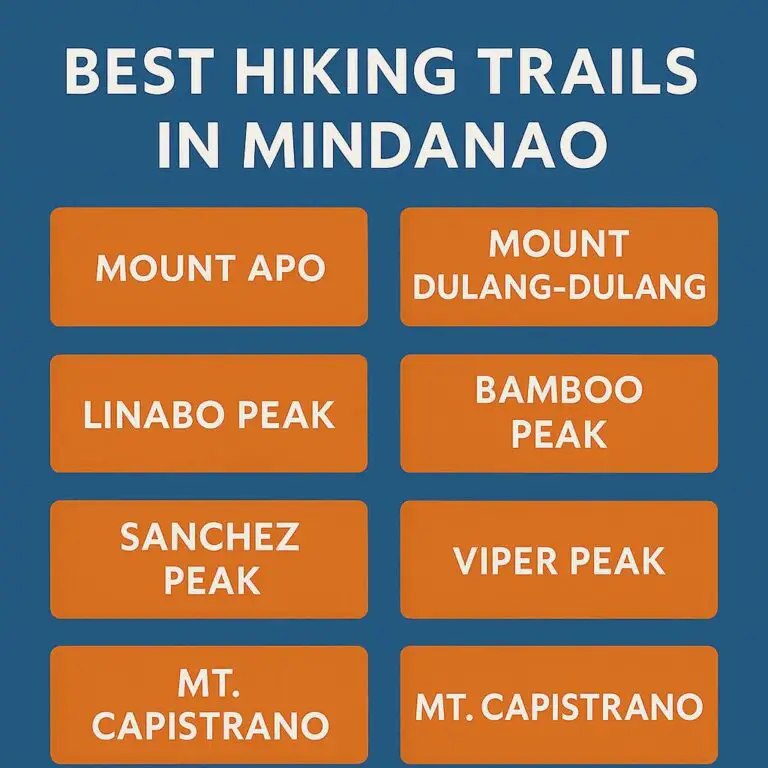Peak bagging is a popular outdoor activity that combines hiking, adventure, and the thrill of reaching new heights. This dynamic activity is more than just hiking; it’s a quest for the summit, blending the physical challenge with the sheer joy of exploration and achievement. Perfect for both seasoned climbers and those new to the trails, peak bagging is your gateway to witnessing breathtaking vistas and pushing personal boundaries.
What is Peak Bagging?
Peak bagging involves the pursuit of climbing and summiting as many peaks as possible, often within a particular region or range. The ultimate goal is to reach the summit of a designated peak, “bagging” it as an accomplishment. Peaks can vary in height and difficulty, ranging from small hills to towering mountain summits. This activity is all about setting personal goals and challenging oneself to reach new heights.
The History of Peak Bagging
Peak bagging has a rich history that spans centuries. It can be traced back to early explorers and mountaineers who were driven by the desire to conquer new terrain and claim the summits of uncharted peaks. One of the earliest documented peak-bagging endeavors was the quest to ascend the highest peaks in the Alps during the 18th and 19th centuries. This period marked the beginning of modern mountaineering and peak bagging.
In the United States, peak bagging gained popularity during the late 19th and early 20th centuries as explorers and mountaineers sought to conquer the challenging peaks of the Rocky Mountains, Sierra Nevada, and other prominent ranges. Notable individuals like John Muir and Theodore Roosevelt played a significant role in promoting the exploration of the country’s wild and mountainous landscapes.
Today, peak bagging has evolved into a diverse and widespread outdoor activity, with enthusiasts pursuing summits all over the world. From the peaks of the Himalayas to the Rockies and the Andes, peak bagging continues to be a source of inspiration for adventurers of all levels.
Benefits of Peak Bagging
Peak bagging offers numerous physical, mental, and emotional benefits to those who embark on this adventurous journey. Here are some of the key advantages:
Physical Fitness and Health
- Cardiovascular Health: Climbing mountains and hiking to summits provide an excellent cardiovascular workout, helping to improve heart health and stamina.
- Strength and Endurance: The uneven terrain and steep ascents of peak bagging build lower body strength and endurance.
- Weight Management: Regular hiking and peak bagging can contribute to weight management and overall fitness.
Mental Well-being
- Stress Reduction: Spending time in nature and accomplishing challenging hikes can reduce stress and promote mental well-being.
- Mental Toughness: Peak bagging fosters mental toughness, resilience, and problem-solving skills as you encounter various obstacles on the trail.
- Improved Focus: The need for navigation and decision-making during hikes enhances concentration and mindfulness.
Connection with Nature
- Scenic Views: Reaching a summit often rewards hikers with breathtaking panoramic views, fostering a deep connection with nature.
- Wildlife Encounters: Hiking in natural environments provides opportunities to observe wildlife and appreciate the beauty of the outdoors.
- Environmental Awareness: Peak baggers often become advocates for conservation and responsible outdoor practices.
Getting Started with Peak Bagging
If you’re inspired to start peak bagging, here are some essential steps to get you on the right track:
Fitness and Preparation
Before tackling challenging peaks, it’s crucial to assess your fitness level and prepare accordingly:
- Physical Conditioning: Engage in regular cardio and strength training exercises to build the necessary endurance and strength for peak bagging.
- Hiking Practice: Start with easier hikes to build your stamina and get accustomed to varying terrain.
- Acclimatization: If you plan to hike at high altitudes, spend time at progressively higher elevations to acclimate to reduced oxygen levels.
Choosing Your First Peaks
Beginners should choose peaks that align with their current fitness level and experience. Consider the following factors:
- Distance: Opt for shorter, less strenuous hikes when starting out and gradually progress to longer and more challenging routes.
- Elevation Gain: Look for peaks with modest elevation gain to minimize the physical strain.
- Accessibility: Choose peaks with well-maintained trails and easy access to reduce navigational challenges.
- Season: Pay attention to seasonal considerations, as some peaks may be inaccessible or dangerous during certain times of the year.
Essential Gear for Peak Bagging
Having the right gear is essential for a successful and safe peak bagging experience. Here’s a list of essential gear to consider:
- Footwear: Invest in comfortable, supportive hiking boots with good traction.
- Clothing: Dress in layers to adapt to changing weather conditions, and bring moisture-wicking and insulating materials.
- Backpack: Use a backpack with enough capacity to carry essentials like water, snacks, a first aid kit, and extra clothing.
- Navigation Tools: Carry a map, compass, or GPS device for navigation, and learn how to use them effectively.
- Safety Gear: Include items like a headlamp, whistle, and multi-tool for safety.
- Food and Water: Pack sufficient food and water for your hike, and consider a water filtration system for longer trips.
- First Aid Kit: Always carry a basic first aid kit with essentials like bandages, pain relievers, and blister treatment.
- Protection from the Elements: Bring rain gear, sun protection (hat, sunglasses, sunscreen), and insect repellent.
- Emergency Communication: A fully charged mobile phone or satellite communication device can be a lifeline in emergencies.
Safety First: Risk Management
Safety should always be a top priority when peak bagging. Consider the following safety measures:
Weather Considerations
- Check Weather Forecasts: Always check weather forecasts for your hiking area, and be prepared for changing conditions.
- Turn Back if Necessary: Don’t hesitate to turn back if the weather deteriorates or if you encounter unsafe conditions.
- Lightning Safety: In thunderstorms, seek shelter in lower terrain and avoid exposed summits or ridges.
Navigation and Map Reading
- Know Your Route: Familiarize yourself with the route using maps and GPS devices, and carry a physical map as a backup.
- Stay on Trail: Stick to established trails to minimize the risk of getting lost.
- Mark Your Way: Use landmarks or GPS waypoints to mark your progress.
Wilderness First Aid
- First Aid Training: Consider taking a wilderness first aid course to handle injuries or emergencies in remote areas.
- Carry a First Aid Kit: Always carry a well-stocked first aid kit and know how to use its contents.
- Emergency Plan: Share your hiking plans with someone reliable and have a plan in case of emergencies.
Strategies for Successful Peak Bagging
Peak bagging requires careful planning and strategic thinking. Here are some strategies to help you achieve success:
Route Planning
- Research Thoroughly: Study route descriptions, trip reports, and guidebooks for your chosen peak.
- Plan Ahead: Calculate the estimated time required for your hike, taking into account your pace and breaks.
- Alternative Routes: Be prepared to adapt your plans in case of unexpected obstacles or changing conditions.
Time Management
- Early Starts: Begin your hike early in the day to allow ample time for ascent, descent, and possible contingencies.
- Pacing: Maintain a steady pace and avoid pushing yourself too hard to conserve energy for the return trip.
- Turnaround Time: Set a turnaround time to ensure you have enough daylight to safely complete your hike.
Group or Solo Hiking
- Group Hiking: Hiking with a group can enhance safety and provide support, especially on challenging hikes.
- Solo Hiking: If hiking solo, inform someone of your plans and expected return time, and be extra cautious.
- Experience Level: Choose your hiking partners wisely based on their experience and fitness level.
Famous Peak Bagging Challenges
Peak bagging often involves completing specific challenges, adding an extra layer of motivation to the activity. Here are some renowned peak bagging challenges:
The Seven Summits
The Seven Summits challenge involves climbing the highest peak on each of the seven continents. This includes:
- Mount Everest in Asia (8,848 meters / 29,029 feet)
- Aconcagua in South America (6,960 meters / 22,837 feet)
- Denali (formerly Mount McKinley) in North America (6,190 meters / 20,310 feet)
- Kilimanjaro in Africa (5,895 meters / 19,341 feet)
- Mount Elbrus in Europe (5,642 meters / 18,510 feet)
- Mount Vinson in Antarctica (4,892 meters / 16,050 feet)
- Puncak Jaya (Carstensz Pyramid) in Oceania (4,884 meters / 16,024 feet) or Mount Kosciuszko in Oceania (2,228 meters / 7,310 feet), depending on the variation of the challenge.
Completing the Seven Summits is a monumental achievement in the world of mountaineering.
State Highpoints
Many outdoor enthusiasts pursue the goal of reaching the highest point in each U.S. state. State highpoints vary in difficulty, from accessible peaks like Mount Marcy in New York to more challenging ones like Denali in Alaska.
County Highpoints
For those who enjoy exploring their local regions, county highpoints provide a unique challenge. Each county in the United States has its highest point, making it possible to bag numerous peaks without extensive travel.
Conservation and Leave No Trace Principles
As peak baggers, it’s essential to be mindful of the impact we have on the environment. Adhering to Leave No Trace principles ensures that the natural beauty of the wilderness is preserved for future generations. Some key Leave No Trace principles include:
- Pack It In, Pack It Out: Carry out all trash and litter, including food scraps and biodegradable items.
- Stay on Established Trails: Avoid creating new trails or disturbing fragile ecosystems.
- Minimize Campfire Impact: Use camp stoves for cooking, and follow regulations regarding fires.
- Respect Wildlife: Observe animals from a distance and avoid feeding them.
- Be Considerate of Other Hikers: Keep noise levels down, yield the trail to others, and practice courtesy.
Conclusion
Peak bagging is a rewarding and exhilarating outdoor pursuit that offers a sense of accomplishment, physical fitness, and a deep connection with nature. Whether you’re tackling the highest peaks in the world or exploring the local mountains, the journey of peak bagging is an unforgettable adventure.
By following safety guidelines, practicing Leave No Trace principles, and setting achievable goals, you can embark on a fulfilling and sustainable peak bagging journey that will leave you with lasting memories and a sense of achievement.




